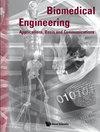基于emd和LSSVM的癫痫脑电图提取与分类
IF 0.6
Q4 ENGINEERING, BIOMEDICAL
Biomedical Engineering: Applications, Basis and Communications
Pub Date : 2022-06-20
DOI:10.4015/s101623722250034x
引用次数: 2
摘要
癫痫脑电图信号具有非平稳和非线性的特点,是典型的脑电图,本文提出了以最小二乘支持向量机(LSSVM)为分类器,以经验模态分解(EMD)为特征提取方法,通过信号分析和处理实现癫痫发作检测的方法。该方法利用EMD方法选择三个相关度较高的本征模态函数(IMF)代替原始信号,解决特征提取和注入过程中的非线性和非平稳问题,然后将特征馈送到LSSVM识别引擎,并采用粒子群优化(PSO)方法对其参数进行优化。本研究使用德国波恩大学公开的EEG数据库,完整数据集中有7960个EEG片段,其中9个识别问题标记为Z-N、Z-F、Z-S、O-N、O-F、O-S N-S F-S和Z-O-N-F-S, Z-N、Z-N - f、Z-N -F-S的平均分类准确率一般可高达90%,Z-O-N-F-S训练集和测试集的分类准确率分别为98.8%和88%。实验结果验证了该方法在特征提取上的有效性和鲁棒性。据我们所知,该方法的优异性能表明,该方法可以用于跟踪患者的健康状态和监测癫痫发作时刻。本文章由计算机程序翻译,如有差异,请以英文原文为准。
AN EXTRACTION AND CLASSIFICATION BASED ON EMD AND LSSVM OF EPILEPTIC EEG
The epilepsy EEG signal with nonstationary and nonlinear characteristics is a typical electroencephalographic (EEG), which have been solved by the proposed method of using least squares support vector machine (LSSVM) as the classifiers and empirical mode decomposition (EMD) as the feature extraction methods to achieve epileptic seizure detection with signal analysis and processing. In this proposed method, EMD is used to select three intrinsic mode functions (IMF) with high correlation to replace the original signals, which has been employed to solve the nonlinear and nonstationary problems in feature extraction and infusion, and then, the feature can be employed to feed to the recognition engine named LSSVM, and its parameters is optimized by particle swarm optimization (PSO). The study uses publicly available EEG database from the University of Bonn (UoB), and there are 7960 EEG segments in the complete dataset, among which are nine recognition problems marked as Z-N, Z-F, Z-S, O-N, O-F,O-S N-S F-S and Z-O-N-F-S, the average classification accuracy of Z-N, Z-F, Z-S, O-N, O-F, O-S, N-S and F-S can be generally obtained as highly as 90%, the Z-O-N-F-S training set and test set classification accuracy are 98.8% and 88%, which had been used to verify the effectiveness and robustness of this proposed method on feature extraction, To the best of our knowledge, the excellent performance of the proposed method has shown that this method can be employed to track the patient’s healthy state and monitor the moment of epilepsy seizure.
求助全文
通过发布文献求助,成功后即可免费获取论文全文。
去求助
来源期刊

Biomedical Engineering: Applications, Basis and Communications
Biochemistry, Genetics and Molecular Biology-Biophysics
CiteScore
1.50
自引率
11.10%
发文量
36
审稿时长
4 months
期刊介绍:
Biomedical Engineering: Applications, Basis and Communications is an international, interdisciplinary journal aiming at publishing up-to-date contributions on original clinical and basic research in the biomedical engineering. Research of biomedical engineering has grown tremendously in the past few decades. Meanwhile, several outstanding journals in the field have emerged, with different emphases and objectives. We hope this journal will serve as a new forum for both scientists and clinicians to share their ideas and the results of their studies.
Biomedical Engineering: Applications, Basis and Communications explores all facets of biomedical engineering, with emphasis on both the clinical and scientific aspects of the study. It covers the fields of bioelectronics, biomaterials, biomechanics, bioinformatics, nano-biological sciences and clinical engineering. The journal fulfils this aim by publishing regular research / clinical articles, short communications, technical notes and review papers. Papers from both basic research and clinical investigations will be considered.
 求助内容:
求助内容: 应助结果提醒方式:
应助结果提醒方式:


